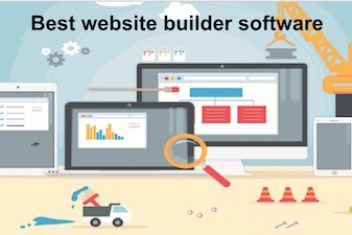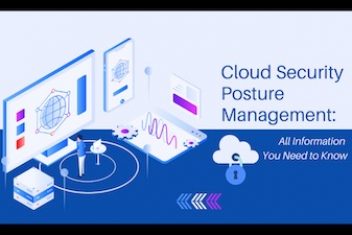By Anna Liza Montenegro – There was a time when artificial intelligence seemed like a concept from a sci-fi movie that could never become real. Yet, in the last few years, we’ve seen that it’s more than that — in fact, its development is well underway.Many industry branches are already starting to use machine learning, while others are planning to do the same soon. The way things are going, it won’t be long before it becomes an integral part of our lives.
That, of course, raises many questions and concerns in all professions, including architecture. How will the industry and the market change? Will AI make some jobs obsolete, and if so, which ones? Unfortunately, there are no easy answers, nor can we predict everything.
But at the very least, architects can breathe a sigh of relief. According to the Economist, architecture is one of the safest professions, with only a 1.8% chance of AI taking over human jobs. If anything, it seems much more likely that architects will work alongside AI.
But how exactly would that work? Well, we’ve decided to examine this human-AI collaboration in more detail. So, based on that, let’s see what the future of architecture might look like.
Read: Artificial Intelligence and IT companies in 2021
AI Enables Higher Levels of Automation
Over the years, architects moved from using pen and paper and doing everything by hand to sophisticated design software with numerous possibilities. If you’ve ever had anything to do with architecture, you’ve surely heard of programs such as Revit, SketchUp, Grasshopper, or AutoCAD . All those make an architect’s life easier, but they still don’t perform any tasks independently.
Well, the next step in the evolution of architecture is incorporating AI into design software and fully automating certain tasks. For instance, why would you have to make routine drawings or deal with calculations when a machine can do it for you? Instead, you can focus on a more creative aspect of your job, which is exactly what every architect dreams of.
And the best part is that you won’t have to check up on the software to make sure the tasks are solved correctly. AI learns on its own, so even when presented with something new that it has not learned yet, it should be able to deal with it. All it needs is access to large pools of data it can draw conclusions.
This sort of collaborative work leads to greater levels of productivity and quicker results. When routine tasks don’t drag you down, you’ll be more willing to work, leading to faster and better designs. On top of that, your AI minimizes the chance of human error, so there’s no reason to keep going back and checking the work.
Read: 5 Best Programming Languages for Test Automation in 2021
AI May Come Up With More Creative Solutions
Unlike regular, programmable robots that many branches of the industry already use, AI has more to offer than automation. Actually, its biggest advantage is precisely its learning capacity and the ability to draw connections. In many ways, sophisticated AI systems would mimic human thinking processes, meaning that they should be able to create, as well.
So, what does that mean for architecture? Well, you could, for instance, ask AI to come up with a family home design. By using the data pool provided to it and the relevant parameters of the house’s area, the software should give you several different options. You would be able to do that for any sort of building without having to define what it is. AI would understand its characteristics with the help of the data it already has at its disposal.
Particularly sophisticated AI systems would also be able to analyze the style of your new building’s surrounding area. That way, even though the building would be completely original, it would still fit in perfectly with the neighborhood.
But if AI can do all that, what will the architect’s job even be? While AI may come up with original designs you’d never think of, someone would still need to check and adjust them. AI software may be excellent at what it does, but it’s still a machine. And as such, it can’t fully understand what makes a particular design livable.
Ultimately, AI will be a great source of creative ideas and may help you drastically speed up your design process. But, at least for now, it’s hard to imagine a world where machines design buildings for humans without any human input.
Read: Best interior design apps for Android
The Future Is Almost Here
You may think that we have quite a long way to go before we reach this future. And to a degree, it is so. But it may be closer than you imagine. Actually, AI that can generate non-existent urban buildings already exists. Using Google Street View as a primary source of data, this AI was able to create new locales that perfectly fit in with other buildings in the area.
And from there, it’s just a few steps to generating architectural designs. The only thing that might slow down this rapid progress is the lack of data necessary for machine learning. But once we overcome data privacy and sharing issues, nothing will stop AI from reaching its full potential.
Still, we shouldn’t be afraid or reluctant to accept change. Instead, we should view AI as just another tool to help us design quicker and better. In a way, it’s much like the architectural software we have now — and can you imagine working on a project without it?
Anna Liza Montenegro is a trained architect and an accomplished marketing professional in the architecture, engineering, and construction (AEC) industry, she possesses both strategic and execution of marketing initiatives, go-to-market plans, and execute product launches.At Microsol Resources, she develops the marketing strategy, brand management, digital marketing, and other demand generation activities for Microsol’s strategic partnerships with Autodesk, McNeel Rhino, Bluebeam, Enscape, Chaos Group V-Ray, Panzura, Ideate Software, FenestraPro, and other partners. When not marketing, she loves spending time with her kids, traveling, and summers in Maine.

If you like the content, we would appreciate your support by buying us a coffee. Thank you so much for your visit and support.



